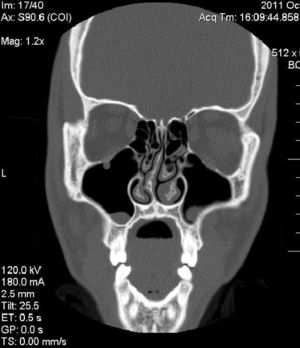There are many ways that a person can develop a deviated septum. These reasons can range from a previous break or from the position a baby is in when they are born. For me, I am very small built, all three of my children ended up with a deviated septum from the birthing process. Many times, this can be corrected by the nose being properly set. However, in cases that the nose is not set back into place in time, it can heal this way, causing serious blockage in the nasal airway.
Symptoms of a Deviated Septum:
Symptoms of a deviated septum can range from simple nasal congestion to headaches and snoring. My oldest son, gets frequent nosebleeds that are quite scary. This problem that sounds so harmless, can actually hinder your ability to get a good night sleep and breath comfortably. In many cases, chronic, severe nosebleeds and repeated sinus infections can be caused by a deviated septum.
Treatments of Deviated Septum:
Sometimes, medication is prescribed to treat a deviated septum and improve comfort and breathing. Nasal spray can help prevent the nose bleeds. Dry air can irritate this condition and cause more nose bleeds, so it is important to keep the inside of the nose moist. However, many times, this condition results in septoplasty, a procedure to repair the bridge of the nose where the problem stems from.
Surgery to Repair a Deviated Septum:
When this procedure was explained to me by my son’s doctor, I was petrified to have it done. However, my son’s nosebleeds scared me just as much. The nosebleeds from a deviated septum can produce quite bit of blood. He had nose bleeds once a week at least and each one would soak a good portion of the towel before we could get it to stop.
This surgery can be approached in two different ways. The first method is approached by going in through the nostril. There are no physically obvious signs that the surgery was performed to anyone else. The procedure can be done under general anesthesia or under local anesthesia. I personally do not recommend local anesthesia for a child, the instruments that are used can be very frightening.
If the septum is deviated in a severe manner, a second procedure may have to be done at the same time. This procedure is called rhinoplasty, where the exterior shape of the nose is visibly altered. This involves removing the septum, reshaping it, and replacing it back into the nose. From what I understand from the doctor, this decision is usually made while you are in surgery.
What to Expect from Surgery:
This procedure can be preformed under general anesthesia or with local anesthesia. It can be preformed on an outpatient basis or inpatient basis as well.
Surgery to repair a deviated septum can cause nasal swelling and bruising. The nose may look a little different, or a lot different that it did before. If the septum is severely deviated, it may be removed completely, or reshaped and placed back inside the nasal cavity.
The nose is then packed with gauze to prevent excess bleeding. Over the next week, packing will be removed and replaced. If the clot comes out with the nasal packing, it is important to replace the gauze with gauze that is covered in Vaseline. This will keep the clot, that should be there for proper healing, from sticking to the gauze and allowing bleeding.
From what my son tells me, after surgery your nose will hurt quite a bit. It will burn like a really bad scrape and feel badly bruised to the touch. Steam from the shower may help relieve some of the discomfort as can switching between ice packs and warm compresses. After about a week, my son felt completely fine. He said it didn’t hurt anymore and was back to his old self.
